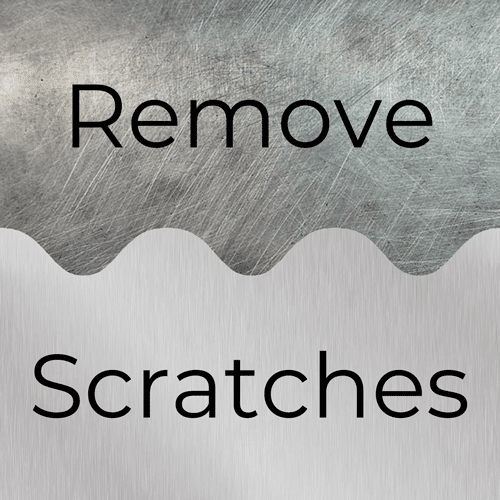Your cart is currently empty!
How to Repair Scratched Toilet Partitions

Over time, even the most carefully maintained toilet compartments will begin to accumulate scratches and light wear. While regular cleaning and sanitizing will significantly improve the appearance of toilet partitions, they will not prevent or address these surface marks. Fortunately, scratches rarely impact a partition’s effectiveness. Even better, repairing minor scratches in several common toilet partition materials is easy. In this post, we’ll look at repair strategies for laminate, phenolic, solid plastic, and stainless steel.
The two most valuable scratch repair tools are patience and time. Surface restoration is a slow process. To avoid a rush (which leads to mistakes), make sure you have adequate time to complete all the necessary tasks.
Repairing Plastic Laminate and Phenolic Toilet Partitions
Use the same steps to repair scratches in plastic laminate and phenolic partitions. A thin-but-tough plastic layer acts as the outside surface for both materials. However, plastic laminate is (overall) less durable and more susceptible to moisture than phenolic. Phenolic is both extremely strong and entirely waterproof. Keep this in mind while carrying out repairs.
Laminates (the thin-but-tough plastic layer we mentioned) are robust by design. They gracefully endure heavy, everyday use in homes, offices, schools, stores, and workshops. Laminate is highly resistant to blemishes. When scratches and gouges do occur, repair involves filling in the damage. The color, adhesion, and strength of the different fillers vary.
Light scratches often disappear after panels, doors, and pilasters receive a coat of clear or tinted wax. The effect is similar to waxing a car’s paint to obscure minor defects. Try filling in and smoothing over deeper scratches with hard wax melted from a block. Numerous liquid fillers – that dry hard – are also available. Commercially available laminate repair kits – often marketed for use on countertops and floors – generally include wax or filler, along with applicator tools.
Solid Plastic Toilet Partition Scratch Repair
Solid plastic (HDPE) has many advantages that make it an excellent choice for high traffic facilities operating on a budget: it is moisture-proof, environmentally friendly, easily cleaned, and easily sanitized. However, the surface of a solid plastic toilet partition is softer than one made from plastic laminate, phenolic, or composite. Consequently, it scratches in situations where the other materials might not – whether a circumstance of misuse or vandalism.
Although a scratch might occur more easily on a solid plastic component, chances are it will be minimally visible. HDPE solid plastic is the same color on the surface as it is throughout. With no additional work, any scratches or gouges will visually blend with the rest of the part.
Some scratches in solid plastic can be physically blended, as well. Warm the small section of the material, using a blow dryer or heat gun. Be careful to not outright melt the plastic. Then burnish any cuts and scratches in the area with a smooth, rounded object. Consider using the bowl of a spoon or the end of a screwdriver handle. Repeatedly move the object along with the scratch, not against it, while applying pressure. You’ll begin to notice the scratch disappear into the surface around it as plastic subtly redistributes to fill the blemish and soften its appearance.
Remove Scratches From Stainless Steel Toilet Partitions
While stainless steel stalls present a hard surface that admirably resists corrosion, their brushed surface can emphasize minor scratches if they occur against the grain. For this reason, avoid cleaners with harsh abrasives, wire brushes, and steel wool cleaning pads when cleaning stainless steel toilet partitions. Removing built-up dirt using these items might require rubbing against the grain, which will disrupt the steel’s brushed texture and harm its appearance.
When very carefully applied, mild abrasives can repair scratches in stainless steel. An experienced DIYer might successfully improvise, using metal polishes and abrasive pads. The safest, most consistent approach is to purchase a stainless steel scratch removal kit. These are readily available for a range of stainless finishes thanks to the popularity of stainless steel appliances in both residential and commercial kitchens. A kit’s contents will restore the grain and blend the repair with the rest of the surface’s finish.
Wrapping Up Scratch Removal
Using the steps we’ve covered, minor scratches to laminate, phenolic, solid plastic, and stainless steel toilet partitions repair easily. As you become familiar with your stalls’ material, experiment with different techniques to find what works best for you. Because partitions come in a wide variety of colors and finishes, from numerous manufacturers, results will vary. Also, the success of any cosmetic repair is subjective. The good news is that for most styles, these easy-to-execute repair methods will always improve the appearance of bathroom stalls with minimal expense.
